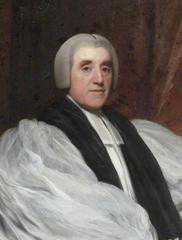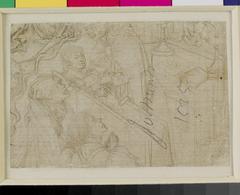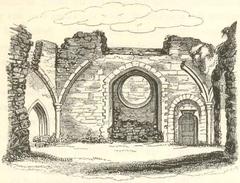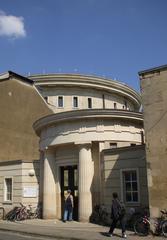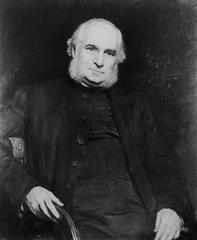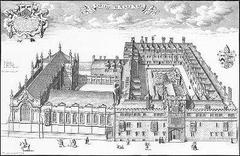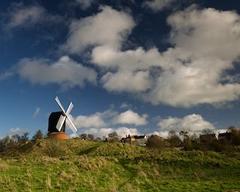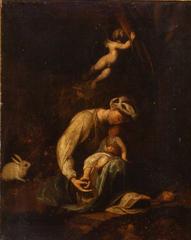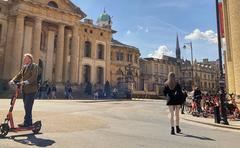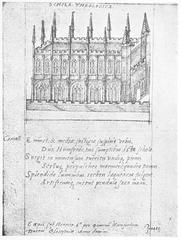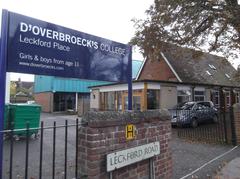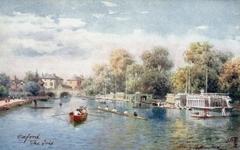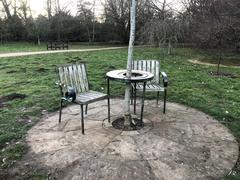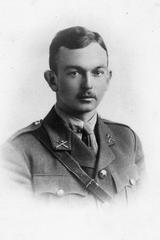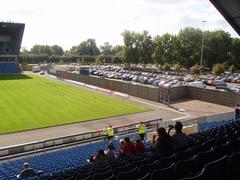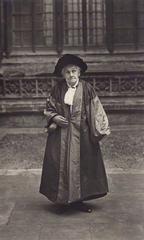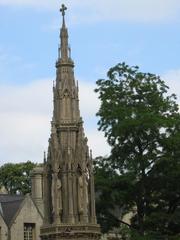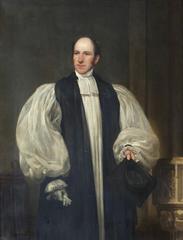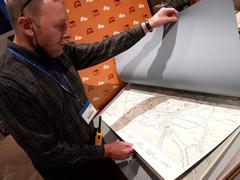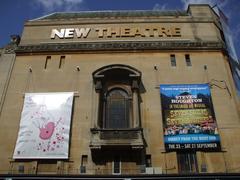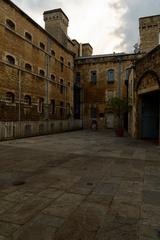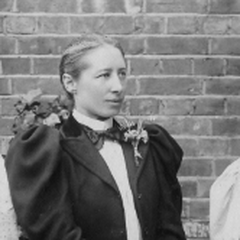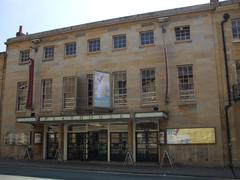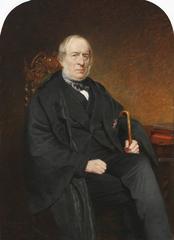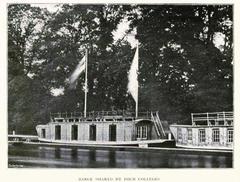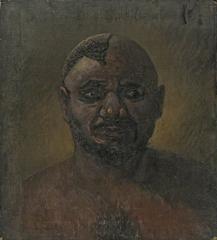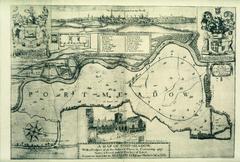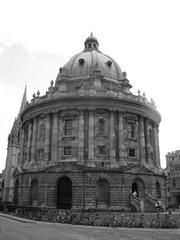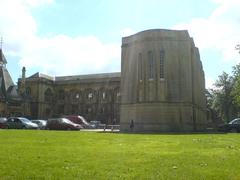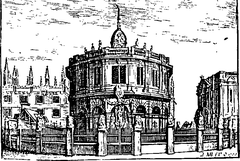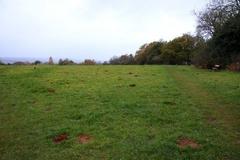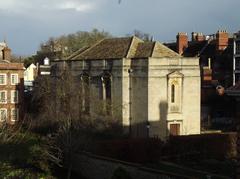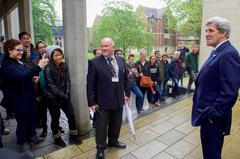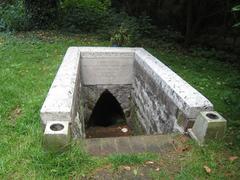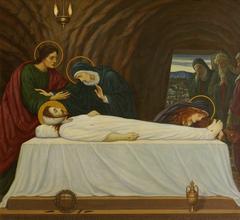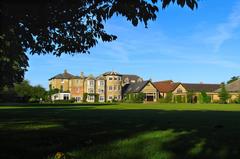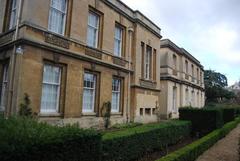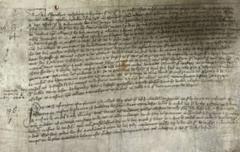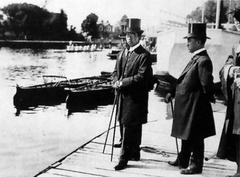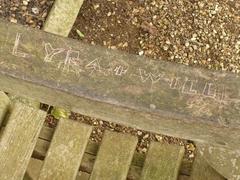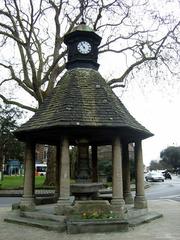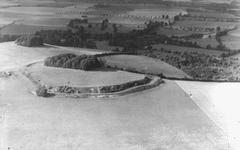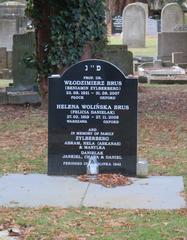Bastion 11 Visiting Hours, Tickets, and Guide to Oxford’s Historical Sites
Date: 14/06/2025
Introduction to Bastion 11 in Oxford
Bastion 11 is a prominent relic of Oxford’s medieval city wall and stands as a vivid testament to the city’s rich defensive and architectural heritage. Built primarily from local limestone in the 13th century, Bastion 11 was part of an extensive fortification system that safeguarded Oxford through centuries of conflict and urban transformation. Its strategic placement along the northern city defenses was crucial during pivotal moments such as the English Civil War, when Oxford served as a Royalist stronghold. Today, this Grade I listed bastion is preserved within the gardens of New College, offering visitors a rare opportunity to connect with Oxford’s layered history and appreciate the evolution of medieval military architecture (Oxford History: City Wall, New College Visitor Information, Nomadic Matt).
Table of Contents
- Introduction
- Medieval Origins and Defensive Role
- Historical Evolution
- Architectural Features and Archaeological Significance
- Visiting Bastion 11: Hours, Tickets, and Accessibility
- Getting There and Nearby Attractions
- Visitor Tips and Photography
- Cultural and Symbolic Significance
- FAQs
- Summary and Recommendations
- References
Medieval Origins and Defensive Role
The Oxford city wall, largely constructed in the 13th century, was designed to protect the city’s growing population and its emerging university community. Bastion 11, a semi-circular projection on the north wall, was one of several defensive outworks allowing defenders to cover adjacent wall sections with crossfire, a significant tactical innovation for the period (Oxford History: City Wall, Oxford City Wall Character Study). The bastion’s limestone construction and thick walls—often more than 1.5 meters—were designed to withstand sieges and artillery, evolving over time as military technology advanced.
During the English Civil War, the wall and its bastions, including Bastion 11, were reinforced with additional earthworks, as documented by military engineer Bernard de Gomme. This network provided crucial defense and shaped the development of the surrounding city, influencing road layouts, markets, and subsequent college construction.
Historical Evolution
Medieval to Early Modern Period
Throughout the medieval era, Bastion 11 was instrumental in defending Oxford during periods of civil unrest, notably during the English Civil War when it was part of the city’s reinforced northern line (West Oxford Character Statement, p. 38). Its presence influenced urban patterns and the alignment of major roads and university buildings.
Post-Medieval Adaptation
By the 18th century, advances in warfare rendered the city walls obsolete. Oxford’s expansion led to the demolition or repurposing of many bastions and wall sections. Bastion 11 survived largely due to its integration into New College’s gardens and its location away from major redevelopment. Nineteenth-century records describe the bastion as a picturesque feature, visible from surrounding properties and college grounds (Oxford History: City Wall).
Architectural Features and Archaeological Significance
Bastion 11’s robust limestone structure features a semi-circular plan, remnants of arrow slits, and traces of parapets. Archaeological investigations have discovered deep medieval foundations and evidence of later modifications, including brickwork from subsequent periods (Oxford Archaeology Report). Its Grade I listing ensures ongoing conservation and careful management of any alterations (Historic England List Entry).
Visiting Bastion 11: Hours, Tickets, and Accessibility
Location: New College, Holywell Street, Oxford
Access: Through New College’s main entrance; Bastion 11 is visible from the college gardens.
Visiting Hours: Typically 10:30 am – 5:00 pm (last entry 4:45 pm); hours may vary during university events (New College Visitor Information).
Tickets: £8 (adults), £7 (concessions), free for children under 7. Entry covers New College gardens and Bastion 11 (Oxford History).
Accessibility: Main paths are generally accessible, though garden paths near Bastion 11 may be uneven or grassy—contact New College in advance for details (New College Accessibility).
Guided Tours: Offered seasonally; check for availability online or at the entrance. City walking tours may also include Bastion 11 (Oxford Tour Guides).
Photography: Permitted in gardens and at Bastion 11; restrictions apply inside buildings.
Getting There and Nearby Attractions
Directions:
- By Foot: From Carfax Tower, walk east along High Street, turn onto Catte Street, then Holywell Street.
- By Public Transport: 20-minute walk from Oxford railway station; buses stop on High Street (UK Travel Planning).
- By Car: Use park-and-ride services; city parking is limited.
Nearby Sites:
- Bodleian Library and Radcliffe Camera
- University Church of St. Mary the Virgin
- Oxford Castle & Prison
- Other preserved city wall sections near Jesus College and St Edmund Hall (Oxford History)
Visitor Tips and Photography
- Best Time to Visit: Late spring and summer for gardens in bloom; early mornings and weekdays for fewer crowds (Global Highlights).
- Dress Code: Modest attire and comfortable shoes recommended.
- Weather: June averages 18–22°C (64–72°F); bring a light jacket and umbrella (Global Highlights).
- Facilities: Restrooms available; no café onsite, but options nearby on Holywell and Broad Street (Wanderlust Chloe).
Cultural and Symbolic Significance
Bastion 11 is an enduring symbol of Oxford’s resilience and heritage, reflecting both its medieval origins and ongoing commitment to historical preservation. Its survival amid the modern cityscape highlights the interplay between Oxford’s academic and civic communities. The bastion is featured in heritage walks, educational programs, and events, reinforcing its role in Oxford’s identity (Oxford Preservation Trust Events).
Frequently Asked Questions (FAQ)
Q: What are Bastion 11’s visiting hours?
A: 10:30 am – 5:00 pm (last entry 4:45 pm); check New College’s website for updates.
Q: How do I buy tickets?
A: At the New College entrance or online (New College Visitor Information).
Q: Is Bastion 11 wheelchair accessible?
A: Main paths are generally accessible; some areas may be uneven—contact New College for details.
Q: Can I take photographs?
A: Yes, in gardens and at Bastion 11; no photography inside college buildings.
Q: Are guided tours available?
A: Yes, seasonally at New College and via city walking tours (Oxford Tour Guides).
Q: Can I climb Bastion 11?
A: No, climbing is prohibited for safety and conservation (Historic England).
Summary and Recommendations
Bastion 11 provides visitors with an evocative connection to Oxford’s medieval defenses and urban history. Integrated within the beautiful New College gardens, it is easily combined with visits to other major landmarks. Ensure a rewarding experience by checking visiting hours, booking tickets or tours in advance, and exploring the broader historical context using digital resources and apps like Audiala. Bastion 11’s preservation and interpretation underscore Oxford’s enduring commitment to its remarkable heritage.
Call to Action:
Download the Audiala app for guided audio tours of Oxford’s historical sites, including Bastion 11. For the latest updates, follow us on social media and explore related articles on Oxford’s city walls, university colleges, and historic gardens.
References and Further Reading
- Oxford History: City Wall
- West Oxford Character Study
- Historic England List Entry
- Nomadic Matt: England Travel Tips – Oxford
- New College Visitor Information
- Oxford Preservation Trust Events
- UK Travel Planning
- Wanderlust Chloe
- Global Highlights
- Oxford Tour Guides
- Oxford City Wall Listed Structures
